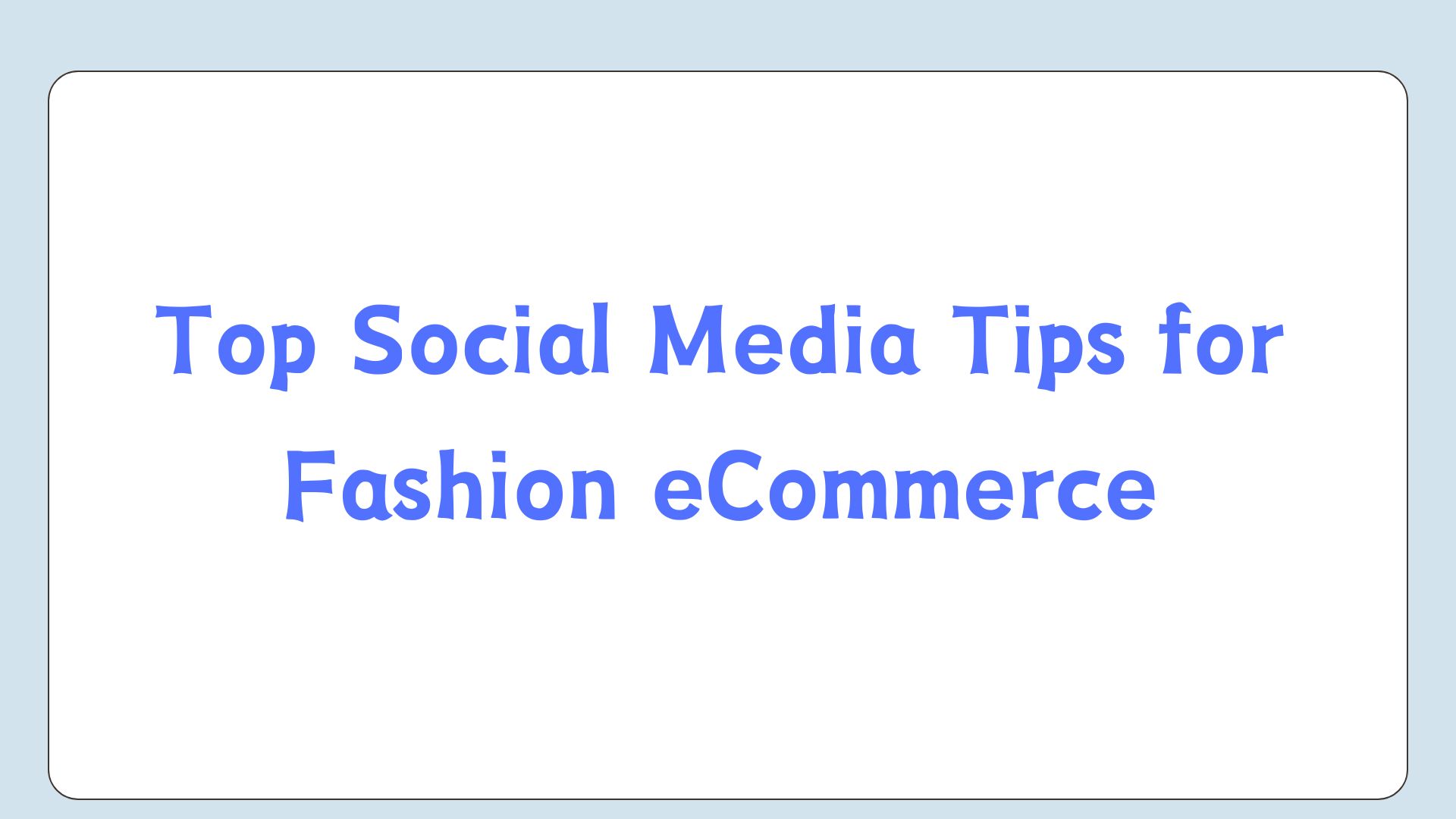In the competitive world of fashion eCommerce, mastering social media can be a game-changer. With the right strategies, you can boost brand visibility, engage with your audience, and drive sales. Here are some top social media tips to help your fashion eCommerce store thrive.
Understanding Your Audience
Identify Your Target Market
Before diving into social media strategies, it’s essential to understand who your target audience is. For fashion eCommerce, this often includes a specific age group, gender, and lifestyle. Conduct market research to identify their preferences, shopping behaviors, and social media habits.
Create Buyer Personas
Develop detailed buyer personas to guide your social media content and advertising strategies. This includes demographic information, interests, and purchasing behavior. Buyer personas help tailor your messaging to resonate with your audience.
Building a Strong Brand Presence
Consistent Branding Across Platforms
Consistency is key in building brand recognition. Use the same logo, color scheme, and tone of voice across all social media platforms. This helps create a cohesive brand image that your audience can easily recognize.
High-Quality Visuals
Fashion is a visual industry. Invest in high-quality photos and videos that showcase your products in the best light. Use professional photography or well-designed graphics to create visually appealing posts.
Engaging Content
Share a mix of content types, including product highlights, behind-the-scenes looks, fashion tips, and user-generated content. Engaging content keeps your audience interested and encourages interaction.
Leveraging Social Media Platforms
Instagram is a powerhouse for fashion eCommerce. Use it to post high-quality images of your products, share fashion tips, and collaborate with influencers. Utilize Instagram Stories and Reels to reach a wider audience and increase engagement.
Facebook remains a valuable platform for fashion brands. Create a business page and use it to share product updates, run promotions, and interact with your followers. Facebook Ads can help target specific demographics and drive traffic to your store.
Pinterest is ideal for fashion eCommerce due to its visual nature. Create eye-catching Pins that link back to your product pages. Use Pinterest’s search functionality to discover trending styles and incorporate them into your content.
TikTok
TikTok is gaining popularity in the fashion industry. Create short, engaging videos that showcase your products in a fun and creative way. Trends on TikTok can offer unique opportunities to reach a broader audience.
Content Strategies
Use Trendy Hashtags
Hashtags increase the visibility of your posts. Research and use trending hashtags relevant to fashion and your brand. Create a branded hashtag to encourage user-generated content and track engagement.
Post Regularly
Consistency in posting keeps your audience engaged and informed. Develop a content calendar to plan your posts in advance and ensure you’re consistently sharing fresh content.
Engage with Your Audience
Respond to comments, messages, and mentions promptly. Engaging with your audience builds a strong community and encourages loyalty. Host Q&A sessions or live streams to interact with your followers in real-time.
Influencer Partnerships
Collaborate with Fashion Influencers
Partnering with fashion influencers can help amplify your brand’s reach. Choose influencers whose style aligns with your brand and who have a genuine connection with their audience. Collaborations can include sponsored posts, giveaways, and product reviews.
Micro-Influencers
Don’t overlook micro-influencers. They may have smaller followings, but their engagement rates are often higher. Collaborating with micro-influencers can be a cost-effective way to reach niche audiences.
Advertising Strategies
Targeted Ads
Social media platforms offer advanced targeting options. Use these features to create targeted ads that reach users based on their interests, location, and behavior. This ensures your ads are seen by potential customers who are more likely to be interested in your products.
Retargeting
Retargeting ads help re-engage users who have previously visited your site but didn’t make a purchase. These ads remind potential customers of your products and encourage them to return to your store.
Measuring Success
Track Key Metrics
Monitor key performance indicators (KPIs) such as engagement rates, click-through rates, and conversion rates. Use analytics tools provided by social media platforms to track the success of your campaigns and adjust strategies as needed.
A/B Testing
Conduct A/B testing to determine which content and ad formats perform best. Test different headlines, images, and call-to-actions to optimize your social media strategy for better results.
Staying Updated with Trends
Follow Industry News
Keep up with the latest fashion and social media trends to stay relevant. Subscribe to industry newsletters, follow fashion blogs, and participate in social media forums to stay informed about new developments.
Adapt Your Strategy
Be flexible and willing to adapt your social media strategy based on emerging trends and changing audience preferences. Regularly review your performance and make adjustments to stay ahead of the competition.
Conclusion
Implementing these social media tips can significantly enhance your fashion eCommerce store’s online presence and drive sales. By understanding your audience, creating engaging content, leveraging various platforms, and staying updated with trends, you can effectively build your brand and connect with your customers. For more tailored strategies, consider exploring affordable SMO services to further boost your social media efforts.
FAQs:
1. How can I identify my target audience for a fashion eCommerce store?
To identify your target audience, start by conducting market research to understand the demographics, interests, and behaviors of potential customers. Create buyer personas that represent your ideal customers, including details such as age, gender, income level, and lifestyle preferences. Use tools like Google Analytics, social media insights, and customer surveys to gather data and refine your understanding of your target market.
2. What type of content should I post on Instagram for my fashion eCommerce store?
For Instagram, focus on posting high-quality images and videos that showcase your products in various styles and settings. Include fashion tips, behind-the-scenes looks, and user-generated content to keep your feed engaging. Utilize Instagram Stories and Reels to highlight new arrivals, promotions, and trends. Engaging content such as polls, Q&As, and interactive posts can also help increase audience interaction.
3. How can I measure the success of my social media campaigns for my fashion eCommerce store?
Measure the success of your social media campaigns by tracking key metrics such as engagement rates (likes, comments, shares), click-through rates, and conversion rates. Use analytics tools provided by social media platforms to monitor these KPIs. Regularly review your performance data to identify which strategies are working and where improvements are needed. A/B testing different content and ad formats can also help optimize your approach for better results.







